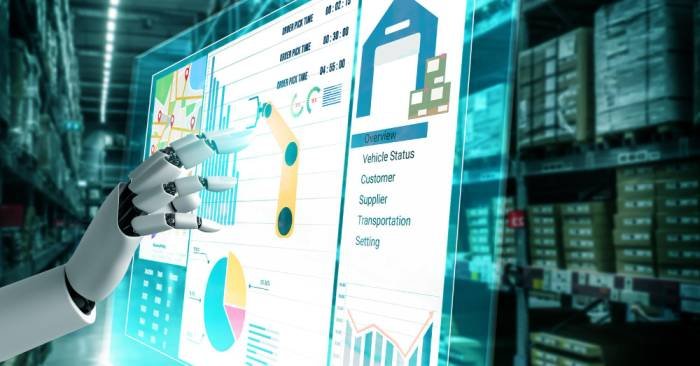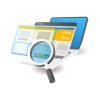In the dynamic realm of software development and quality assurance, staying ahead of the curve proves crucial for delivering high-quality products. Test automation, a cornerstone of modern software testing, undergoes transformative evolution driven by technological advancements and shifting development practices. As we peer into the future of automation testing, it becomes essential to identify emerging trends poised to redefine our approach to software testing and QA. This blog will explore ten significant trends to reshape the test automation landscape.
1. Integration of AI and Machine Learning
The fusion of AI and ML with test automation emerges as a driving force in shaping the future. AI-powered algorithms predict test outcomes, adapt to application changes, and intelligently prioritize test cases. This trend heightens testing efficiency and aids in identifying complex patterns and anomalies that manual testing might overlook. By harnessing AI and ML capabilities, organizations unlock the potential for more accurate and adaptive testing strategies.
2. Shifting Testing Left
With organizations embracing Agile and DevOps methodologies, testing shifts left in the development lifecycle. This approach integrates testing activities earlier, ensuring the capture and rectification of defects at the inception stage. Shift-left testing reduces costs and fosters collaboration between development and testing teams. By catching issues earlier in the process, teams can save resources and streamline the development cycle, leading to faster and more reliable releases.
3. Enabling Continuous Testing and DevOps
Continuous testing remains integral to DevOps practices, ensuring continuous validation of code changes through automated tests. With shorter development cycles and frequent releases, automated tests offer swift feedback, enabling development teams to address issues and uphold software quality promptly. Embracing Continuous Testing as part of DevOps culture encourages collaboration, accelerates feedback loops, and promotes a culture of continuous improvement.
4. Embracing Cloud-Based Test Automation
Cloud computing revolutionizes software development and testing. Cloud-based testing environments offer scalability, flexibility, and cost-effectiveness. Teams simulate real-world scenarios across diverse devices and configurations, enabling comprehensive testing without complex infrastructure setup. By embracing cloud-based test automation, organizations can achieve faster test execution, improved resource utilization, and more accurate results.
5. API and Microservices Testing Proliferate
As applications adopt a microservices architecture, API testing takes center stage. Automated API testing verifies seamless communication between microservices, guaranteeing the integrity and functionality of each component. This trend enhances the reliability and interoperability of intricate systems. Robust API and microservices testing ensures smooth interactions between various components, facilitating agile development and effective problem-solving.
6. Streamlining Test Data Management
Managing test data, a critical yet time-consuming aspect of testing, gains automation. Test data automation generates, provides, and maintains test data for comprehensive coverage. Automated test data management accelerates testing cycles and reduces data-related bottlenecks. With streamlined test data management, teams can create realistic test environments efficiently, leading to more accurate test results and improved software quality.
7. Democratizing Test Automation with Codeless Tools
Codeless test automation tools empower non-technical testers. These tools offer intuitive interfaces and visual workflows for creating and executing automated tests. This democratization of testing reduces dependence on coding skills, expanding the testing team’s capabilities. Organizations can achieve greater testing coverage and more efficient collaboration by enabling non-technical team members to contribute to testing efforts.
8. Focusing on Performance Engineering and Load Testing
As applications scale, performance takes precedence. Performance engineering integrates early performance testing to identify bottlenecks and optimize application speed. Automated load testing simulates real-world scenarios, ensuring applications handle varying traffic levels. Proactive performance engineering helps identify and address performance bottlenecks before they impact end-users, resulting in a smoother user experience.
9. Bolstering Security Testing Through Automation
As cyber threats evolve, the need for security testing automation has become increasingly crucial. Automated security testing tools offer a powerful solution to this challenge, scanning for vulnerabilities and detecting potential threats while fortifying applications against attacks. This trend is transforming the application security landscape, allowing organizations to minimize risk and ensure their software applications remain resilient to cyber threats and compliant with industry security standards. By leveraging the power of automated security testing, businesses can compete and ensure that their applications are protected against even the most advanced attacks.
10. Adapting Test Automation to Emerging Technologies
Emerging technologies like IoT, blockchain, and AI-driven applications bring unique testing challenges. Test automation adapts to verify functionality, compatibility, and performance. AI-powered testing frameworks tailored to these domains emerge to ensure software reliability. Adapting test automation to emerging technologies enables organizations to address new complexities and ensure their innovative products meet the highest quality standards.
Conclusion
The future of test automation embodies technological innovation, agility, and adaptability. Embracing these trends positions organizations to enhance software quality, accelerate development cycles, and meet the demands of an ever-evolving digital landscape. By staying attuned to these trends, testing professionals navigate the challenges and opportunities ahead, ensuring software products remain competitive, reliable, and resilient.
Software testing tools like HeadSpin leverage AI to provide comprehensive testing solutions. The HeadSpin AI not only analyzes but gives actionable insights. Reach out!



